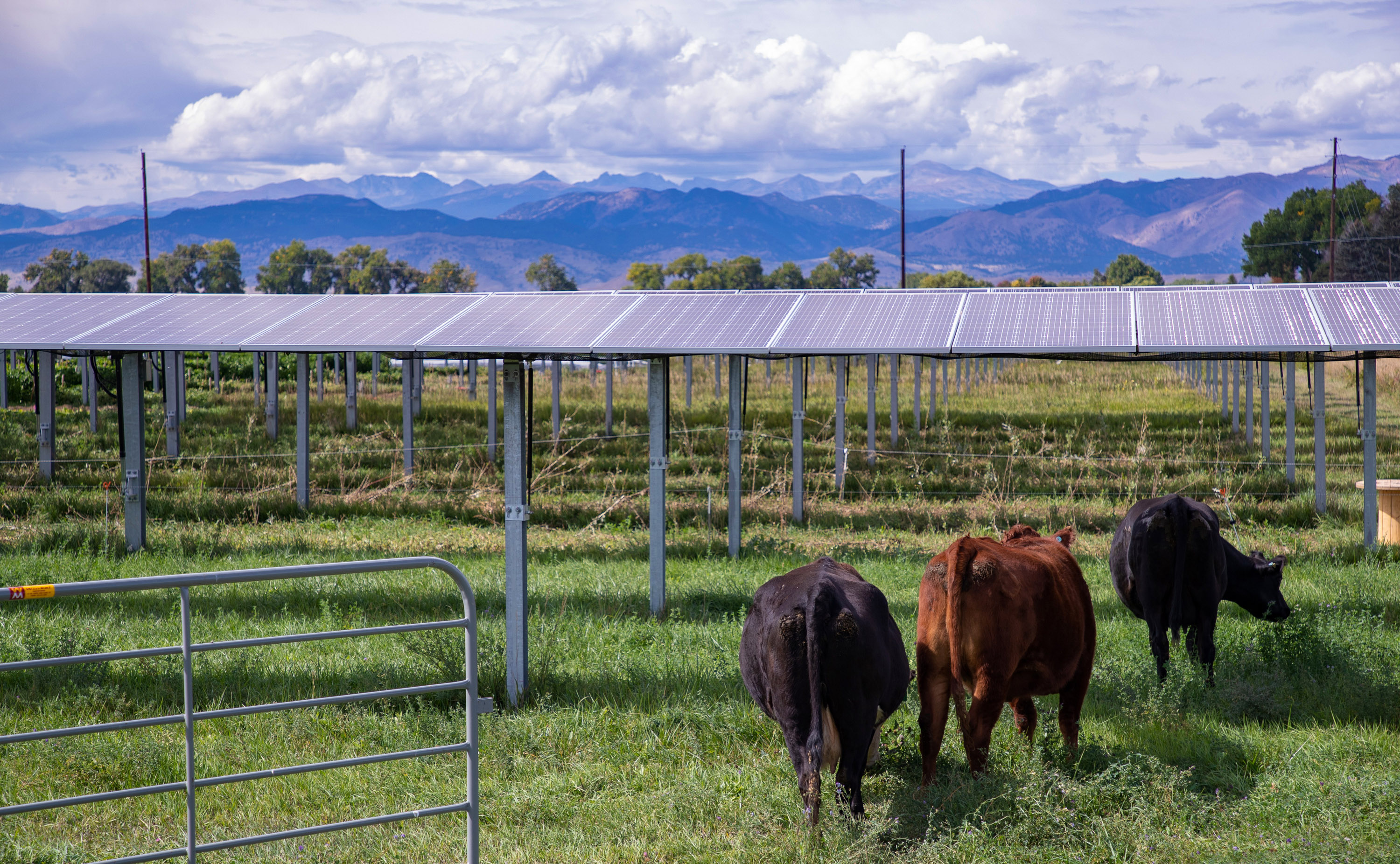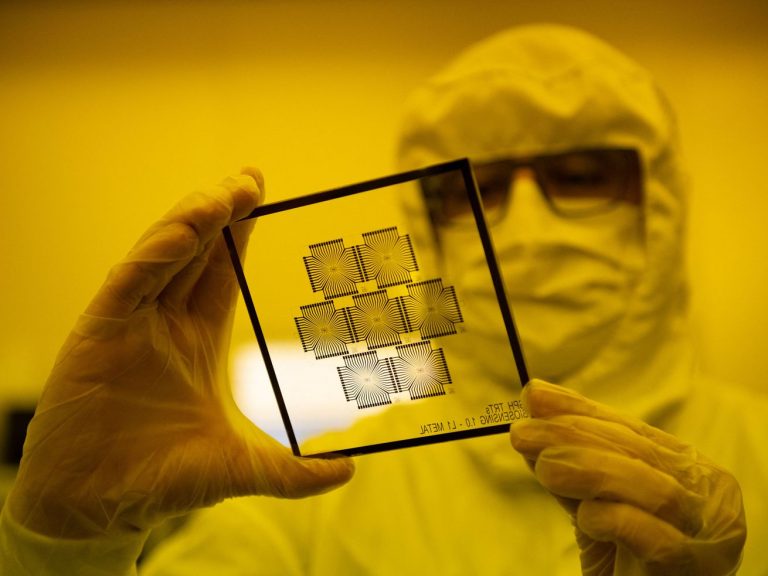The approach could be a boon for both energy generation and crop production. Less direct sunlight helps keep plants cooler during the day, allowing them to retain more moisture and thus require less watering. Having plants underneath the solar panels also reduces the amount of heat reflected by the ground, which keeps the panels cooler and makes them more efficient. Farm workers tending the crops also benefit from cooler temperatures, as do grazing animals.

JOE DELNERO/NREL
Wide-scale adoption of the practice could help reduce carbon dioxide emissions in the United States by 330,000 tons a year and add more than 100,000 rural jobs without affecting crop yield very much. A 2019 study in the journal Scientific Reports predicted that the world’s energy needs could be met by solar panels if less than 1% of cropland were converted to agrivoltaic systems.
Combining agriculture and energy generation has multiple benefits, says Joshua Pearce, a solar energy expert at Western University in London, Ontario. “The solar energy and the increased land-use efficiency is worth money, and thus increases revenue for a given acre for the farmer,” he says. “The local community also benefits from protecting access to fresh food and renewable energy.”
But researchers are still sorting out the best ways to implement agrivoltaic systems. One variable is height: at Jack’s Solar Garden, for example, scientists are experimenting with panels raised either six feet or eight feet from the ground. There is also the question of which types of plants respond best to the additional shade from solar panels.






